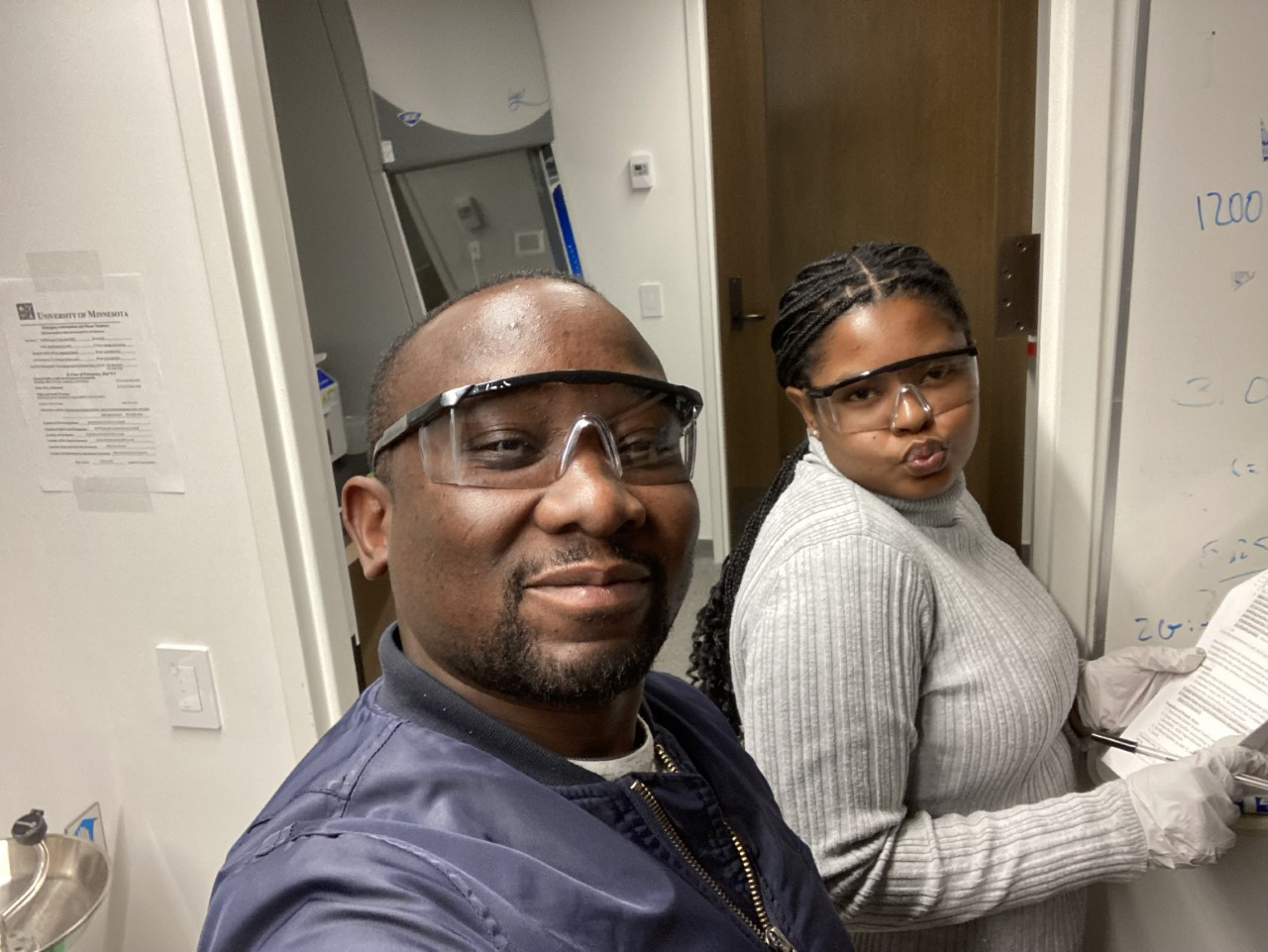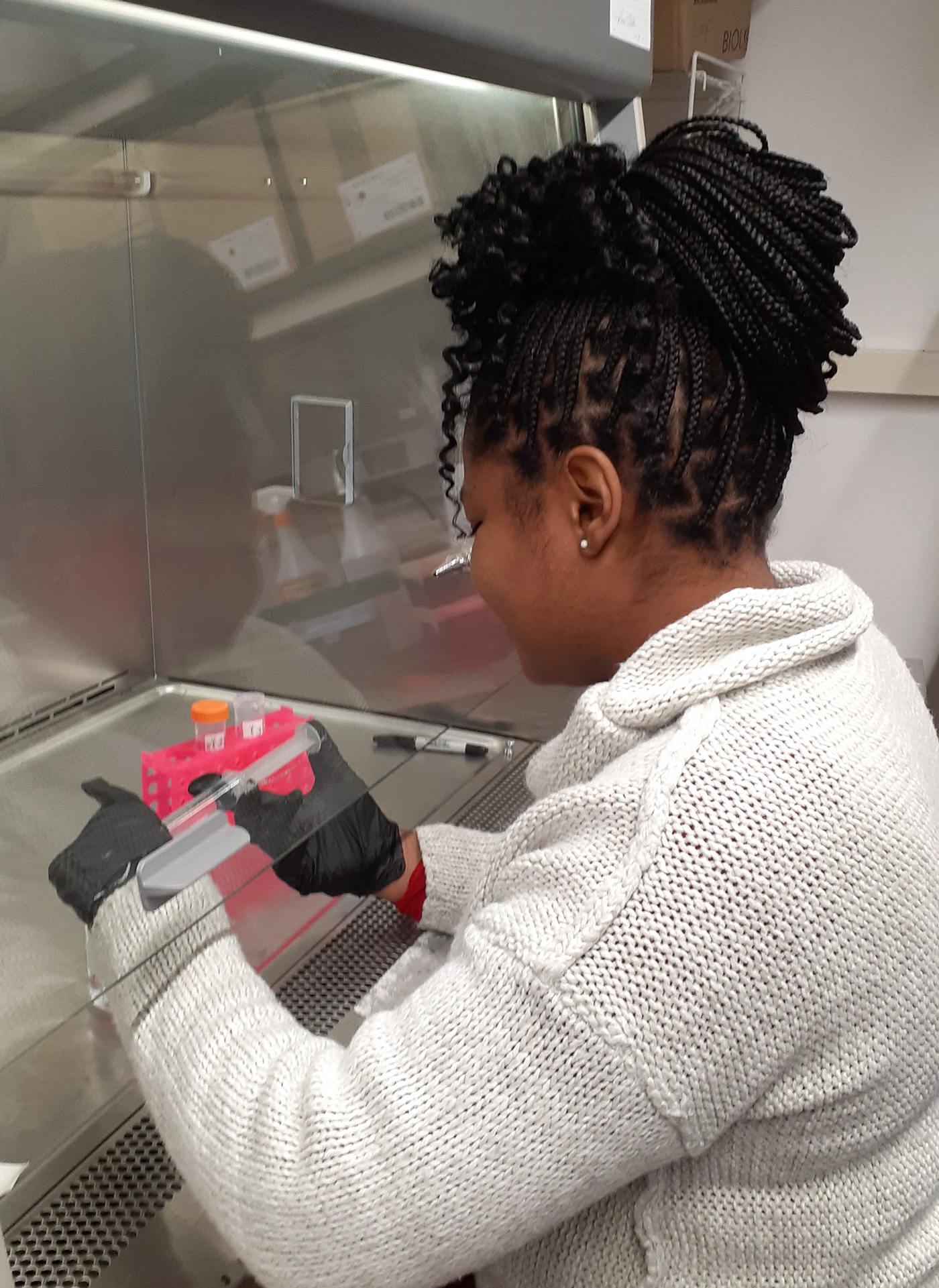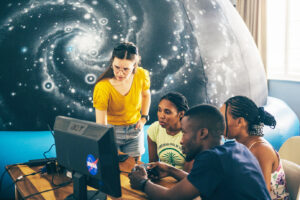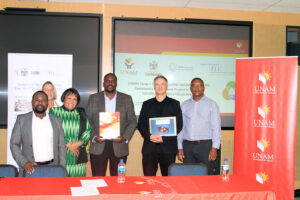Through a working relationship between the University of Namibia and the University of Minnesota, a marine researcher at SANUMARC, Sam Nujoma Campus, Mr Gadaffi Liswaniso, and an intern, Ms Diedre Dawids were invited to spend some 3 weeks in the United States of America. The traveling was mainly funded by the University of Minnesota with support funding from the University of Namibia. During the visit, Mr Liswaniso and Ms Dawids worked under Professor Jake Bailey and Dr. Beverly Flood in the Department of Earth and Environmental Sciences at the University of Minnesota (UMN). The UMN Laboratory works on genomes that belong to strains of Marithioploca, Maribeggiatoa, and a possible new genus of their parent group Beggiatoaceae. These bacteria are autotrophic, sulfur-oxidizers that live in upper surface sediments off the coast of Namibia.
During their visit, they received training on the R-project and R-studio packages for bioinformatics studies, Illumina, and sanger sequencing which is important in building Mr Liswaniso’s research on microbial ecology and metagenomics data analysis. They also got training on data analysis using PacBio, nanopore, Brabaham, Github, FastaQC, Astrobiomike coding, and Phyloseq for analysis & graphics which is important in developing the researcher’s skills for effectiveness in environmental DNA research.
They did Fluorescent In situ Hybridization (FISH) where fluorescent DNA probes are used to target specific sites on chromosomes, FISH is used as a taxonomic tool to identify organisms and to identify genes of interest. This technique has been widely used in identifying organisms at species level using species-specific tags that only bind to a specific region of DNA in various organisms. Fish can be used to identify functional regions of organisms’ DNA making it an important tool for gene expression in any specimen.
During the visit, FISH was used to identify endobionts (cells that live within other living cells) that live within Thiomargarita namibiensis cells. These endobionts were recently discovered and the researchers are investigating the relationship between the two species.

This was a potential collaborative project of mentoring and collaboration beyond the visit. The training visit was indeed a success and a memorandum of understanding is underway between the two universities to allow for more collaboration on research and grant proposal development.

The skills gained will allow Mr Liswaniso to confidently produce quality data from post-analysis and be able to verify analyzed data from local suppliers of molecular biology products.





